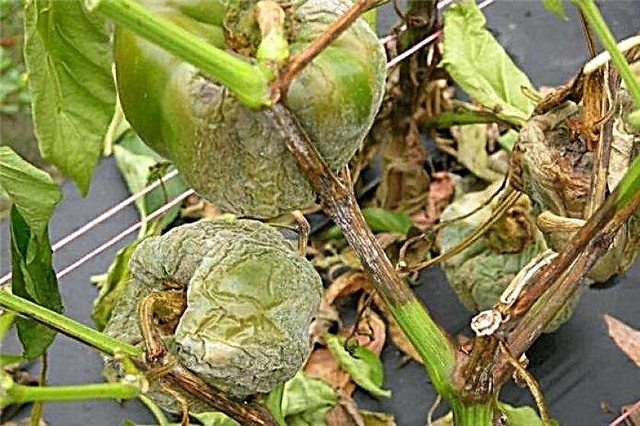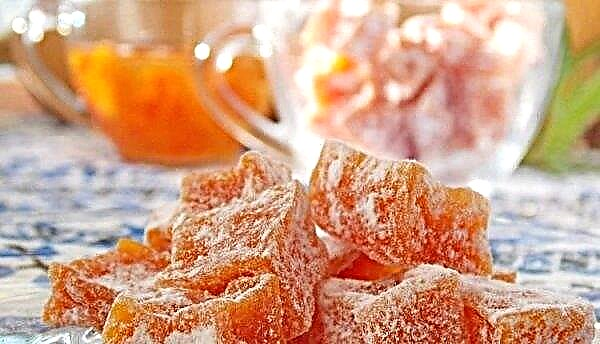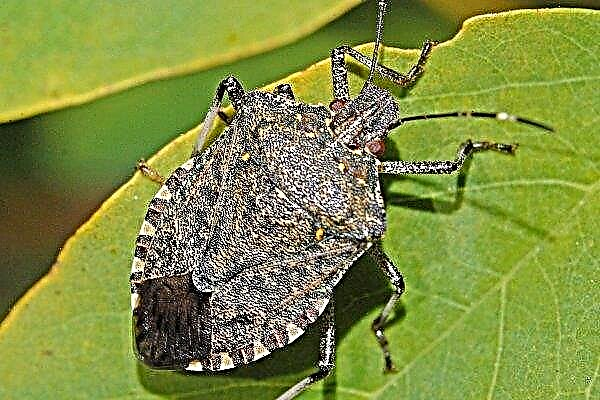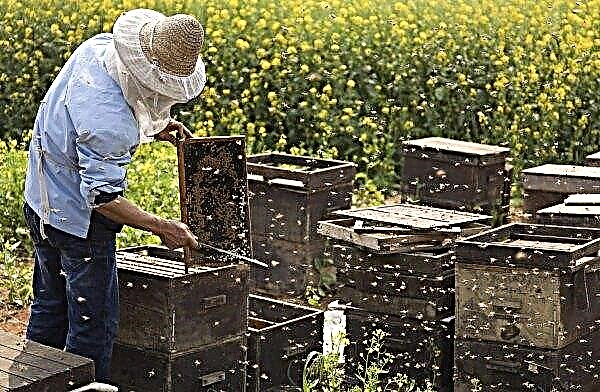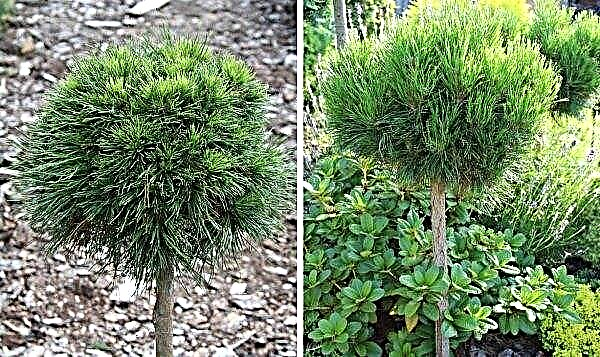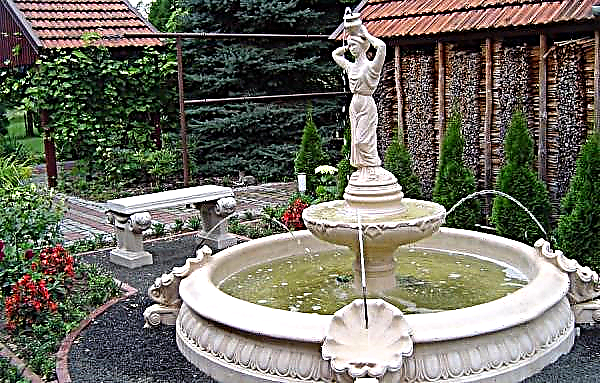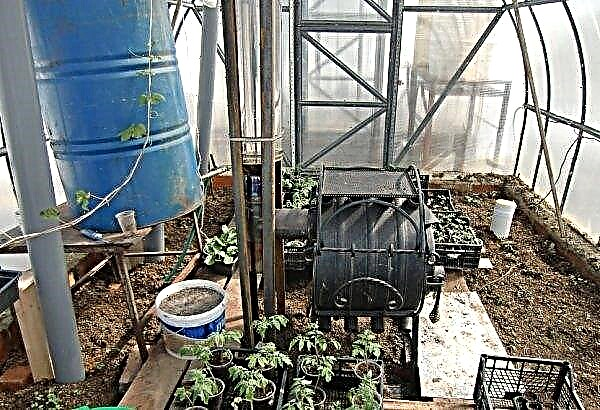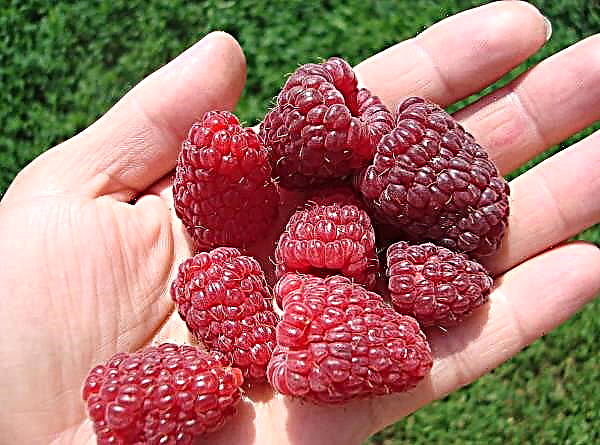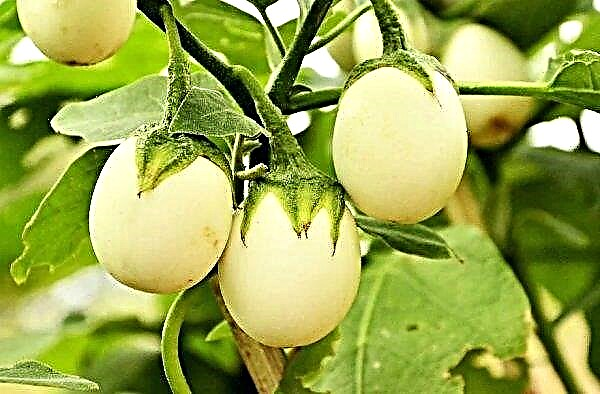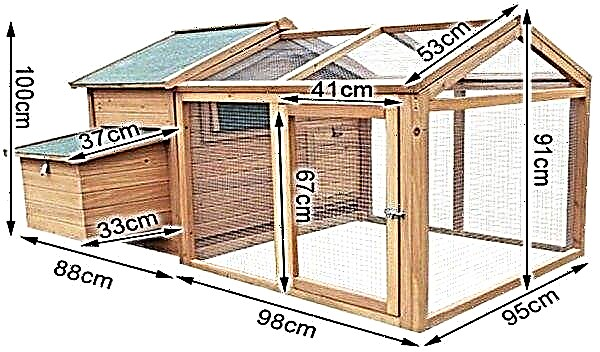When choosing a potato variety for planting on a plot, the gardener can be guided by different criteria: some are interested in the taste of root crops, others are counting on the earliest possible harvest, others - on the contrary, pick out potatoes that can be stored all winter, fourth are interested in the most unpretentious varieties that do not promise great difficulties when growing. There are, however, universal varieties capable of more or less satisfying all of the above requirements. One of them is the Ilyinsky potato, which will be discussed in this review.
Description and characteristic
The Ilyinsky variety was bred at the end of the last century by a group of scientists on the basis of the State Scientific Institution "All-Russian Research Institute of Potato named after A. G. Lorch" (Moscow region).
Did you know? Alexander Lorch is a breeder who is so outstanding that he received his doctorate without defending a dissertation.
Copyright patents for Ilyinsky also have:
- Agricultural center "Korenevo" (Moscow region);
- Colorado company (Omsk);
- LLC "Names of Pryakhin" (Ryazan region);
- Transholding company (Lipetsk region);
- Biolab LLC (Samara Region);
- individual entrepreneur Sushkova V. B.
The variety was included in the State Register of Breeding Achievements of the Russian Federation in 1999 and, according to the results of tests, it is recommended for cultivation in the following regions of Russia: Lipetsk, Voronezh, Kursk, Belgorod, Tambov, Oryol, Ulyanovsk, Penza, Samara.
In addition, Tatarstan and Mordovia, which are part of the Middle Volga economic region of the Russian Federation, are suitable regions for the variety. Ilyinsky also gained great popularity outside of Russia, in particular, Belarusian, Ukrainian and Moldovan farmers are very fond of him.
Appearance of tubers and bushes
Ilyinsky potato bush has the following characteristics:
| Bush height | Medium (about 50 cm) |
| Bush structure | Multilateral, erect, but in the absence of support, decaying to the sides |
| Leaf size | Middle |
| Leaf color | Saturated green, plain |
| Leaf shape | Standard, flat, without wavy edges |
| Inflorescences | Small, corolla size average |
| Flowers | Purple red |
Ilyinsky refers to table varieties of potatoes.
Important! Potato varieties according to their content in starch tubers are divided into table, technical, fodder and universal. For use in food, table varieties rich in vitamin C and having low starchiness are considered the best - from 12 to 18%.
The root crops of the potato cultivar Ilyinsky have a regular round or oval shape and relatively small sizes. The average weight of one potato varies between 55–160 g. The peel is of medium thickness, pink in color with small red eyes. The pulp is white, friable, does not darken during cooking. The starch content is 16–18%, and the solids content is 15.7–18% (a rather high indicator).

By their intended purpose, root crops can be considered universal, although they can sometimes lose shape during cooking, therefore they are more suitable for making mashed potatoes than for soups or boiling whole. But when frying, including deep-fried, they acquire an excellent crisp taste, due to which it is this direction of culinary use for the variety that is considered the most suitable.
Ripening dates and productivity
Ilyinsky forms full-value tubers after 70–80 days after planting, which allows the variety to be classified as medium early.
Important! By maturity, potato varieties are divided into five main groups - early, mid-early, middle, mid-late and late. The period of tuber formation in these varieties is, respectively, 60, 80, 90, 110 and 120 days after planting.
Regarding the yield indicators of the variety, farmers give different numbers, agreeing that this parameter is very high at Ilyinsky. So, depending on the growing region, compliance with agricultural technology and prevailing weather conditions, from one hectare from 17.5–21.0 tons to 35–37 tons of selected potatoes were collected, which is at least 20% higher than the average yield.
Simply put, up to 5 kg of Ilyinsky potatoes can be grown per 1 m² (8–13 tubers per bush).

Resistance to diseases and cold
Ilyinsky is characterized by strong immunity and endurance, however, the resistance of the variety to the most dangerous diseases and pests for potatoes is not the same. The originator notes the following parameters of potato stability Ilyinsky:
| To potato cancer | High (for patotype I, considered the most common) |
| To viral diseases | High |
| To the scab | Average |
| To late blight (aerial part) | Below average |
| To late blight (tubers) | Average |
| To golden potato cyst nematode | Low |
| Resistance of tops to preservation of pathogen isolates | Low |
According to gardeners and farmers, Ilyinsky has high drought tolerance and tolerates short interruptions in irrigation even in extreme heat. But the variety is not cold-resistant, therefore it is not suitable for cultivation in territories located north of the Central Black Earth region and the Middle Volga.
Did you know? In the years 1845-1849. Ireland was struck by the Great Famine, sometimes referred to as the Irish Potato Hunger, as the cause of the tragedy was a fungus that hit potato plantations and deprived many poor people of a single food product.
Advantages and disadvantages of the variety
- Through the efforts of breeders, Ilyinsky has a number of undeniable advantages, among which:
- very high yields;
- decent taste characteristics of root crops;
- low percentage of non-marketable fruits (not more than 1–13%);
- universal direction of use;
- good keeping quality and insignificant (up to 7%) losses during storage, which is rare for early grades;
- unpretentiousness, lack of difficulties with growing;
- early ripening;
- flat shape and the same size of the fruit;
- good crop mobility;
- drought tolerance, resistance to many fungal and viral diseases of potatoes.
- However, the variety also has disadvantages. These include:
- low cold resistance;
- the need for high hilling of the bush due to the tendency of its trunks to decay and lie down on the ground;
- low resistance to nematode and low resistance to scab and late blight;
- short shelf life (compared with later varieties);
- rarity (it is difficult to find seed material for planting).
Planting and growing varieties
Ilyinsky - a potato variety intended for cultivation in the open ground. The agricultural technology of planting tubers is generally standard, it is only necessary to take into account specific climatic and weather conditions, depending on which this procedure may have features.

Landing time
Gardeners advise planting Ilyinsky in May, however, such information is not enough for successful crop cultivation. In the same regions, spring heat can come at different times, and if in some cases the laying of tubers in the ground can be carried out in the last decade of April, in others, even at the end of spring, the weather presents surprises in the form of return frosts.
Did you know? Our ancestors, who did not have at their disposal thermometers, accurately determined the time for planting potatoes, focusing on the beginning of flowering bird cherry or on the appearance on the birch of leaves the size of a large cherry.
When determining the timing of planting, an experienced farmer focuses not on the calendar, but on the temperature, and not so much air as soil. It is important that the earth is warmed up at the depth at which the tuber will be laid, which is about 10 cm below the surface, to the optimum + 10 ° C (daily average air temperature should be at least + 8 ° C).
 Since Ilyinsky does not differ in cold resistance, it is definitely not worth rushing with his landing, since young shoots, in the event of a sharp cold snap, have all chances to die irrevocably
Since Ilyinsky does not differ in cold resistance, it is definitely not worth rushing with his landing, since young shoots, in the event of a sharp cold snap, have all chances to die irrevocably
Soil requirements
Loose and light soils with a high content of nutrients are suitable for potatoes, however, this culture can be grown on any soil, if it is properly prepared.
Below are the types of soils found in the Ilinsky cultivation zone, as well as recommendations for their preparation (work is best done in the fall):
| Soil type | Suitability for growing potatoes (possible problems) | Adjustment methods |
| Sandstone and Sandstone | Light enough, but quickly dry out and lose mineral fertilizers due to their washing off | The introduction of manure and compost to a depth of 20–25 cm based on, respectively, 2–3 or 1.5–2 kg per 1 m² |
| Clay and heavy loamy soils | They pass air poorly, but retain water, which leads to its stagnation in the roots | The application of sand, sawdust or peat in the calculation, respectively, 20–30, 1.5–2 or 2 ֪ 3 kg per 1 m² |
| Peat and chernozem | Perfect option | No additional training needed |
Important! The lighter the soil, the faster it warms up, and, accordingly, the earlier you can start planting.
A neutral soil with a pH level in the range of 5.1–6 is more suitable for the crop. On this soil, dandelions and coltsfoot grow well, so if such weeds are present on the site, its acidity can not be checked - it is great for placing a potato bed.
When planting a high-yielding Ilyinsky, it is also important to take into account such a concept as crop rotation.
The culture will grow well after:
- siderates, especially lupine;
- flax;
- cereals;
- legumes;
- pumpkin;
- onions and garlic.
You should not plant root crops after solanaceous (potatoes, tomatoes, eggplant, bitter and sweet peppers), but beets, carrots and cabbage as predecessors, although not ideal, are acceptable.
Preparing tubers for planting
To potato sprouted faster, it must first be sprouted. Such work should begin at least one month before the proposed landing.
Important! Intense lighting contributes to the formation of toxic solanine glycoside in the tubers. In root crops intended for consumption, such a substance is not necessary, however, it is useful for planting material, since it kills the pathogenic microflora remaining in the tubers.
The process of germination also involves the following sequence of actions:
- First you need to sort the tubers, sorting them by size (for planting it is better to use not too small, but not the largest specimens, however, since the depth of the hole depends on the size of the root crop, it is better that the planting material remains homogeneous, and if this fails , the largest specimens can be cut in half). Also, at the sorting stage, it is necessary to discard damaged (rotted, overdried, moldy) fruits.
- This is followed by a disinfection process, as well as, if desired, stimulation of growth. As a dressing agent, you can use wood ash, potassium permanganate or vitriol (some gardeners treat seed with insecticidal preparations such as Maxim, Prestige, Aktara or Masterpiece). To accelerate the germination and subsequent rooting in the disinfecting solution, you can add mineral fertilizers - boric acid (10 g), urea (40 g) and superphosphate (60 g). Norms are calculated on 10 l of water. In such a mixture, it is enough to withstand potatoes from 20 to 30 minutes.
- Intensive warming up. The procedure lasts 2-3 days and consists in the fact that the selected and pickled tubers are placed in a very warm and bright place at a temperature within + 30 ° С. Such conditions should trigger the germination process.
- The completion of preparatory work involves the movement of tubers to a cooler (about + 15 ... + 20 ° С), but well-lit place, where they should remain for 3-4 weeks.

If for some reason it was not possible to fully germinate the tubers before planting, you can soak them in a special growth stimulator (Epin, Kornevin, Mikonom, or Poteytin) 1-2 days before entering the field.
Landing technology
Before starting planting, you should mark out a previously prepared, dug up and aligned garden bed. Ilyinsky potato is recommended to be planted according to the scheme of 50 × 35 cm and laid in the soil to a depth of 8-10 cm.
Having outlined the places for future bushes, they dig holes of the right size, then put organic and mineral fertilizers in each hole, for example:
- humus or compost (up to 700 ml);
- bone meal or nitrophos (1/2 cup or 1 tbsp. l., respectively);
- wood ash (1 glass).
After mixing the nutrient mixture with the soil located at the bottom of the pit, it remains to lay the tubers in it and bury it. If desired, Ilyinsky can be put in 2-3 pieces in one hole.

Care Features
Care of the variety is not particularly difficult. For the cultivation of Ilyinsky, specifics related to the cultivation of medium early potato varieties are relevant. In addition, it is important to remember the main problems inherent in the variety - diseases and pests, the defeat of which is subject to Ilyinsky.
Fertilizer intensity
If the soil is properly prepared and fertilized before planting the tubers, early potatoes will not need intensive fertilizer. But still, some nutrition during the growing season is necessary.
Important! The critical time for laying the Ilinsky harvest is the beginning of August (visually this period can be determined by the beginning of budding and flowering). In this phase, potatoes are critically needed for intensive watering and replenishment with mineral fertilizers.
Feeding Ilyinsky is carried out exclusively by the foliar method (by spraying the bush with an aqueous solution of fertilizer) and may include the use of such drugs:
| Potassium sulfate or potassium salt | 5-10 g |
| Kalimag (potassium and magnesium fertilizer) | 2-3 g |
| Superphosphate double | 15 g |
| Boric acid | 5-10 g |
| Zinc Sulfate | 3-5 g |
| Potassium permanganate | 5 g |
| Blue vitriol | 5 g |
| Magnesium chlorate | 3-5 g |
| Cobalt chloride | 5 g |
| Ammonium sodium molybdate or ammonium molybdenum acid | 5 g |
The consumption rates of the drug in the above table are designed for 10 liters of water and treatment of 4-5 bushes.

Watering frequency
Ilyinsky is highly resistant to drought, and therefore little dependent on the intensity of irrigation. Moreover, waterlogged soil increases the risk of developing fungal infections that affect not so much the surface of the bush as its roots and tubers.
You can water the garden no more than once every 1.5–2 weeks, if there was no rain during this period. Slightly more plentiful and frequent watering should be in the phase of the formation of root crops.Important! The volume of water for irrigation of potatoes must be calculated in such a way that it saturates not only the surface layer of the soil, but also goes into the depth of not less than 40-50 cm.
 If tap water is used for irrigation, it must first be defended and warmed up in the sun
If tap water is used for irrigation, it must first be defended and warmed up in the sun
Weeding
Weed control is important when growing potatoes. Weed grass, competing with the plant for nutrients in the soil and sunlight, is a reserve for parasites and fungi, including dangerous for Ilyinsky phytophthora.
Weed removal should be carried out after each irrigation and combined with soil loosening, necessary to maintain air exchange in it and moisture retention.
Caring for the soil on which Ilyinsky grows includes a technique such as hilling.This procedure not only protects the bush from spilling and laying the stems on the ground, but also allows to significantly increase the yield indicators of the variety (in a large amount of land in contact with the bush, the maximum number of tubers is formed).

Disease and Pest Prevention
One of the main shortcomings of Ilyinsky is his susceptibility to the defeat of certain diseases and pests. Of the former, late blight and scab represent the greatest danger, and of the latter, worms (the golden nematode belongs to them), wireworms, bears, and Colorado beetles.
 To prevent the occurrence of such problems, farmers recommend using spraying bushes with copper sulfate, Bordeaux mixture, copper sulfate or manganese sulfate.
To prevent the occurrence of such problems, farmers recommend using spraying bushes with copper sulfate, Bordeaux mixture, copper sulfate or manganese sulfate.
If potatoes were previously grown on the plot, and the gardener reliably knows about the presence of a nematode in the soil, immediately after harvesting, experts advise to decontaminate the bed with special nematicides in order to destroy the pest and save the crop from it next year. For this purpose, you can use (dosage is based on 1 m² of area):
- "Heterophos" in granules of 7.5% - 8 g;
- "Tiazon" in powder 85% - 270 g;
- "Carbation" in an aqueous solution of 40% - 60 ml.
Important! The mentioned preparations are highly toxic and unsafe for ecology, therefore, supporters of organic farming should fight the nematode by competent crop rotation and the use of bioinsecticides.
To combat other diseases and pests, if they appear on the bed, fungicidal and insecticidal drugs are used, for example:
| Against late blight, scab and other fungal infections | Against Colorado potato beetle and other aerial pests | Against pests parasitizing in root crops |
|
|
|
When using pesticides, it is important to change the drug from time to time in order to prevent the pathogen from developing resistance to a particular pesticide.
Harvesting and storage
The marketable size of the Ilyinsky tubers reaches in about 70 days, although you can start digging young potatoes already at the end of June. As for the timing of a full-fledged harvest, depending on climatic conditions, they occur from mid-August to the first decade of September, when the plant completely completes the vegetation process.
It is generally accepted that early ripe varieties of vegetables are unsuitable for long-term storage. With regard to potatoes, this rule is only partially true; it is simply more difficult to preserve such a crop.
So, to improve the keeping quality of the crop, root crops, on the one hand, must be laid in the ground until they are fully ripe, on the other hand, they cannot be overexposed too long.
Important! Harvesting is started after the aerial part of the plant is completely yellowed and dried.
The main problem in storing mid-early potato varieties is that already at the stage of approaching spring tubers begin to sprout intensively. Darkening, decay, wrinkling - all these problems can threaten the crop, even in the cellar
Darkening, decay, wrinkling - all these problems can threaten the crop, even in the cellar
To prevent this from happening, you must strictly adhere to the following rules:
- Immediately after removing the tubers from the ground, they must be sorted, selecting absolutely whole, healthy specimens of the correct form.
- The question of the need to wash root crops before storing them for storage is controversial: oddly enough, some experienced gardeners recommend doing this by carefully drying the tubers then. It is believed that this precaution allows you to get rid of a significant part of the pathogenic microflora, which is stored on the peel and in lumps of earth adhering to it.
- Before placing in the cellar, potatoes must be kept for 10-15 days at room temperature in a dry and darkened place with good ventilation.
- After drying, the tubers should be inspected and sorted again.
- The storage in which the crop will be located must first be disinfected, for which absolutely all items (containers, implements, garbage) are first removed from it, after which they are treated with a Bordeaux mixture or whitewashed with lime. As an additional precaution, it is useful to burn a sulfur block in the storehouse or spray it with formalin (solution concentration 1–2%), then close for two days and then thoroughly ventilate.
- The optimal conditions for long-term storage of potatoes are: high humidity (but not more than 85%), low, but at the same time plus temperature (+ 5 ... + 7 ° C), absolute darkness.
- During storage, from time to time, stocks need to be inspected and sorted out.
Important! If the potatoes did not darken until late autumn, and in the winter months this problem began to appear, this means that the temperature in the cellar dropped below + 5 ° C, and the tubers were supercooled.
Over the short history of existence, Ilyinsky potato managed to fall in love with both professional farmers and the owners of personal household plots. Both those and others appreciated the unpretentiousness of the variety, its early maturity and high productivity, excellent taste and marketability of tubers. The only inconvenience is Ilyinsky’s low resistance to certain types of diseases and pests, as well as the fact that this potato is not suitable for cultivation in areas with harsh climates, such as, for example, the Urals or Siberia.

